Costantino Grana
Efficient MedSAMs: Segment Anything in Medical Images on Laptop
Dec 20, 2024


Abstract:Promptable segmentation foundation models have emerged as a transformative approach to addressing the diverse needs in medical images, but most existing models require expensive computing, posing a big barrier to their adoption in clinical practice. In this work, we organized the first international competition dedicated to promptable medical image segmentation, featuring a large-scale dataset spanning nine common imaging modalities from over 20 different institutions. The top teams developed lightweight segmentation foundation models and implemented an efficient inference pipeline that substantially reduced computational requirements while maintaining state-of-the-art segmentation accuracy. Moreover, the post-challenge phase advanced the algorithms through the design of performance booster and reproducibility tasks, resulting in improved algorithms and validated reproducibility of the winning solution. Furthermore, the best-performing algorithms have been incorporated into the open-source software with a user-friendly interface to facilitate clinical adoption. The data and code are publicly available to foster the further development of medical image segmentation foundation models and pave the way for impactful real-world applications.
Taming Mambas for Voxel Level 3D Medical Image Segmentation
Oct 20, 2024Abstract:Recently, the field of 3D medical segmentation has been dominated by deep learning models employing Convolutional Neural Networks (CNNs) and Transformer-based architectures, each with their distinctive strengths and limitations. CNNs are constrained by a local receptive field, whereas transformers are hindered by their substantial memory requirements as well as they data hungriness, making them not ideal for processing 3D medical volumes at a fine-grained level. For these reasons, fully convolutional neural networks, as nnUNet, still dominate the scene when segmenting medical structures in 3D large medical volumes. Despite numerous advancements towards developing transformer variants with subquadratic time and memory complexity, these models still fall short in content-based reasoning. A recent breakthrough is Mamba, a Recurrent Neural Network (RNN) based on State Space Models (SSMs) outperforming Transformers in many long-context tasks (million-length sequences) on famous natural language processing and genomic benchmarks while keeping a linear complexity.
MedShapeNet -- A Large-Scale Dataset of 3D Medical Shapes for Computer Vision
Sep 12, 2023



Abstract:We present MedShapeNet, a large collection of anatomical shapes (e.g., bones, organs, vessels) and 3D surgical instrument models. Prior to the deep learning era, the broad application of statistical shape models (SSMs) in medical image analysis is evidence that shapes have been commonly used to describe medical data. Nowadays, however, state-of-the-art (SOTA) deep learning algorithms in medical imaging are predominantly voxel-based. In computer vision, on the contrary, shapes (including, voxel occupancy grids, meshes, point clouds and implicit surface models) are preferred data representations in 3D, as seen from the numerous shape-related publications in premier vision conferences, such as the IEEE/CVF Conference on Computer Vision and Pattern Recognition (CVPR), as well as the increasing popularity of ShapeNet (about 51,300 models) and Princeton ModelNet (127,915 models) in computer vision research. MedShapeNet is created as an alternative to these commonly used shape benchmarks to facilitate the translation of data-driven vision algorithms to medical applications, and it extends the opportunities to adapt SOTA vision algorithms to solve critical medical problems. Besides, the majority of the medical shapes in MedShapeNet are modeled directly on the imaging data of real patients, and therefore it complements well existing shape benchmarks comprising of computer-aided design (CAD) models. MedShapeNet currently includes more than 100,000 medical shapes, and provides annotations in the form of paired data. It is therefore also a freely available repository of 3D models for extended reality (virtual reality - VR, augmented reality - AR, mixed reality - MR) and medical 3D printing. This white paper describes in detail the motivations behind MedShapeNet, the shape acquisition procedures, the use cases, as well as the usage of the online shape search portal: https://medshapenet.ikim.nrw/
Hierarchical Boundary-Aware Neural Encoder for Video Captioning
Apr 10, 2017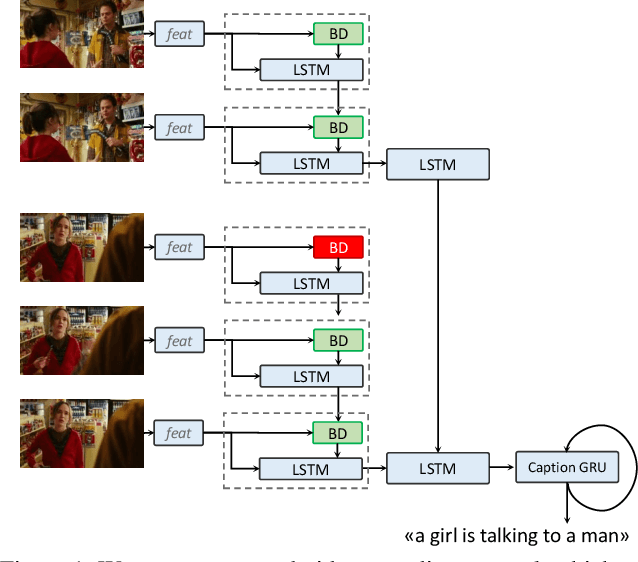
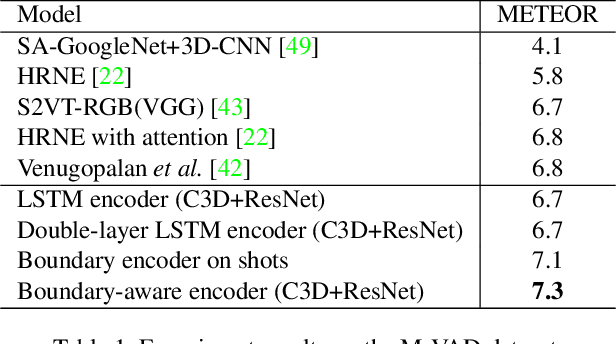
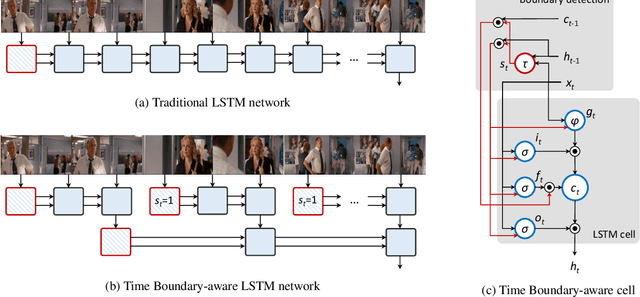
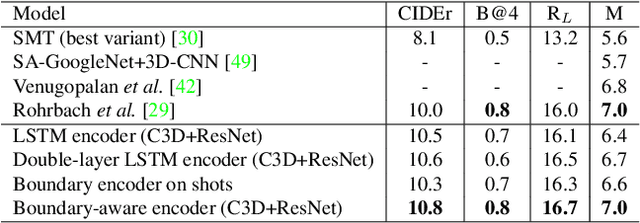
Abstract:The use of Recurrent Neural Networks for video captioning has recently gained a lot of attention, since they can be used both to encode the input video and to generate the corresponding description. In this paper, we present a recurrent video encoding scheme which can discover and leverage the hierarchical structure of the video. Unlike the classical encoder-decoder approach, in which a video is encoded continuously by a recurrent layer, we propose a novel LSTM cell, which can identify discontinuity points between frames or segments and modify the temporal connections of the encoding layer accordingly. We evaluate our approach on three large-scale datasets: the Montreal Video Annotation dataset, the MPII Movie Description dataset and the Microsoft Video Description Corpus. Experiments show that our approach can discover appropriate hierarchical representations of input videos and improve the state of the art results on movie description datasets.
Recognizing and Presenting the Storytelling Video Structure with Deep Multimodal Networks
Nov 10, 2016
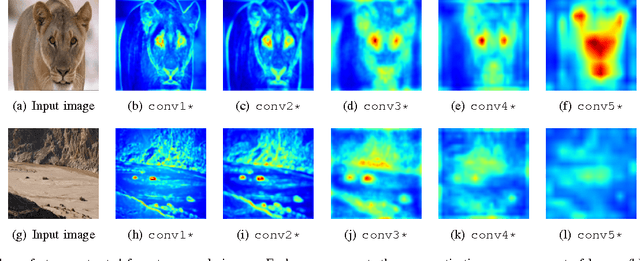
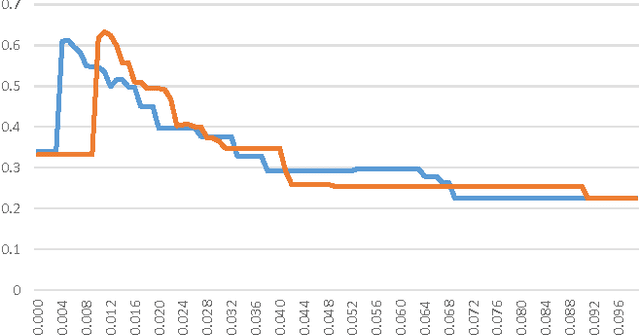
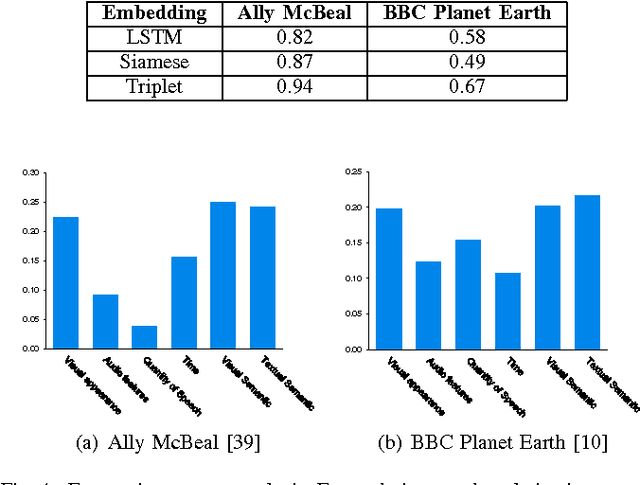
Abstract:This paper presents a novel approach for temporal and semantic segmentation of edited videos into meaningful segments, from the point of view of the storytelling structure. The objective is to decompose a long video into more manageable sequences, which can in turn be used to retrieve the most significant parts of it given a textual query and to provide an effective summarization. Previous video decomposition methods mainly employed perceptual cues, tackling the problem either as a story change detection, or as a similarity grouping task, and the lack of semantics limited their ability to identify story boundaries. Our proposal connects together perceptual, audio and semantic cues in a specialized deep network architecture designed with a combination of CNNs which generate an appropriate embedding, and clusters shots into connected sequences of semantic scenes, i.e. stories. A retrieval presentation strategy is also proposed, by selecting the semantically and aesthetically "most valuable" thumbnails to present, considering the query in order to improve the storytelling presentation. Finally, the subjective nature of the task is considered, by conducting experiments with different annotators and by proposing an algorithm to maximize the agreement between automatic results and human annotators.
Scene-driven Retrieval in Edited Videos using Aesthetic and Semantic Deep Features
Apr 09, 2016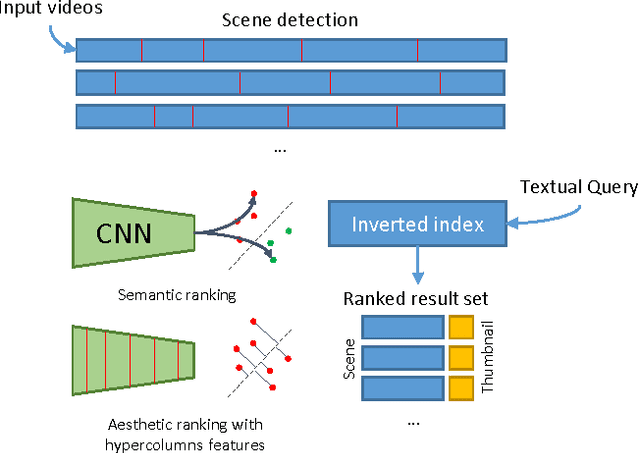
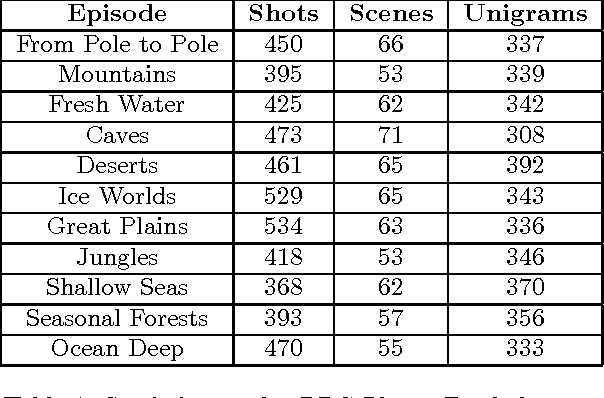
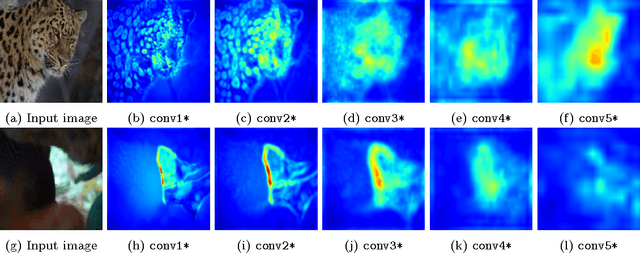
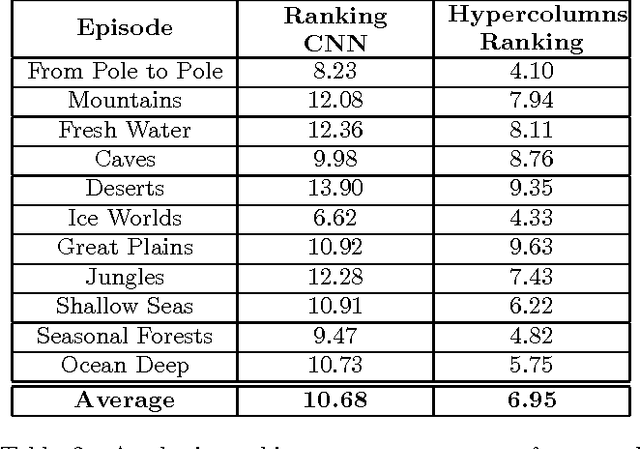
Abstract:This paper presents a novel retrieval pipeline for video collections, which aims to retrieve the most significant parts of an edited video for a given query, and represent them with thumbnails which are at the same time semantically meaningful and aesthetically remarkable. Videos are first segmented into coherent and story-telling scenes, then a retrieval algorithm based on deep learning is proposed to retrieve the most significant scenes for a textual query. A ranking strategy based on deep features is finally used to tackle the problem of visualizing the best thumbnail. Qualitative and quantitative experiments are conducted on a collection of edited videos to demonstrate the effectiveness of our approach.
A Deep Siamese Network for Scene Detection in Broadcast Videos
Oct 29, 2015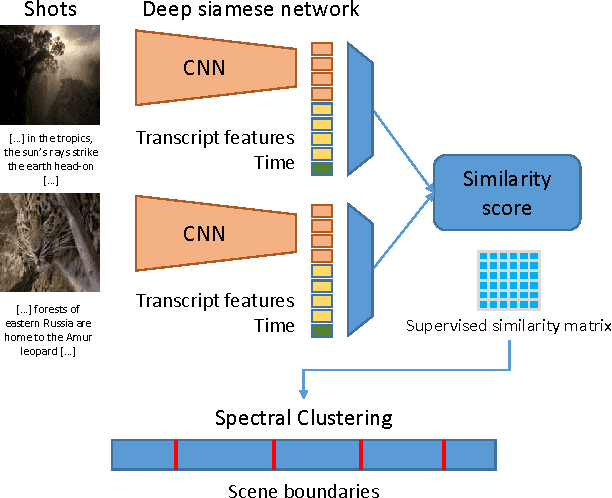
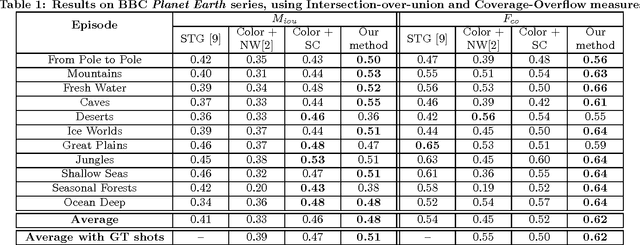
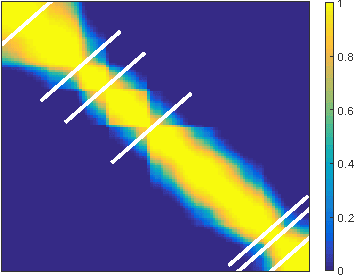
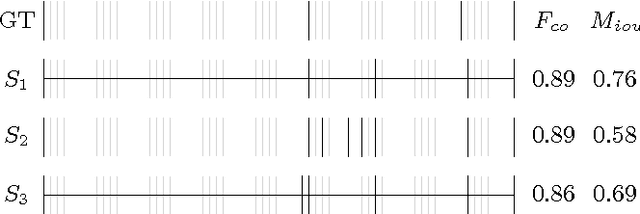
Abstract:We present a model that automatically divides broadcast videos into coherent scenes by learning a distance measure between shots. Experiments are performed to demonstrate the effectiveness of our approach by comparing our algorithm against recent proposals for automatic scene segmentation. We also propose an improved performance measure that aims to reduce the gap between numerical evaluation and expected results, and propose and release a new benchmark dataset.
 Add to Chrome
Add to Chrome Add to Firefox
Add to Firefox Add to Edge
Add to Edge